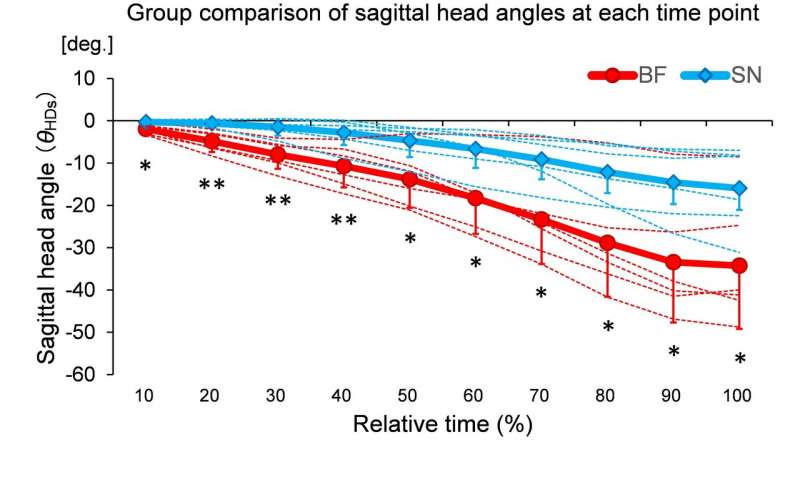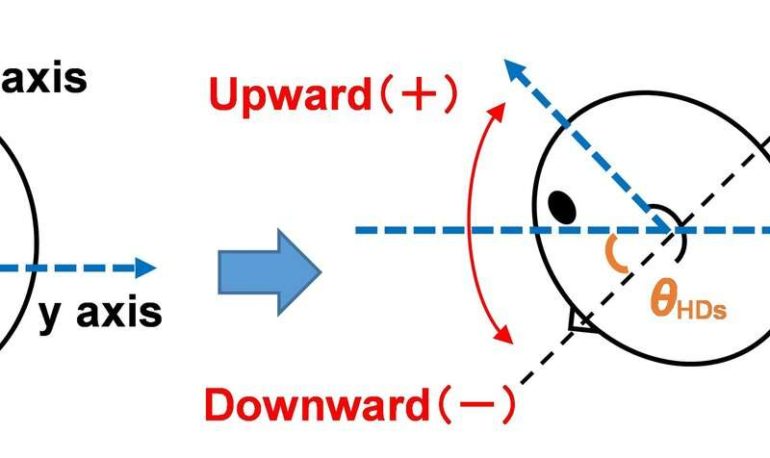Researchers from the Faculty of Health and Sport Sciences at the University of Tsukuba studied the way blind players and sighted non-athletes tracked an incoming noise-making ball. They found that blind players employed a larger downward head rotation when trapping the rolling ball, compared with blindfolded sighted volunteers. This work may help explain the methods visually impaired people utilize to complete daily tasks, as well as assist in the creation of new smart-assistant devices.
Blind soccer is a sport that can be enjoyed by anyone, regardless of visual ability. Except for the goalkeepers, players are blindfolded during the game, and can follow the location of the ball using the sounds it emits. To better understand the way visually impaired players are able to receive and control the ball, scientists at the University of Tsukuba recruited both experienced blind soccer players as well as sighted nonathlete volunteers. A system of ten cameras was used to keep track of the three-dimensional position of the reflective markers attached to the body of each test subject. The task for each participant was to trap an incoming rolling ball with his right foot while blindfolded.
The seasoned blind footballers showed a larger downward head rotation angle, as well as better overall performance, compared with the sighted non-athletes. However, no significant differences were found in the horizontal head or trunk rotation. This indicates that blind footballers can more closely match the motion of their head with the movement of the approaching ball.
“Our study suggests that blind footballers are better at keeping the ball in a consistent egocentric direction relative to the head throughout the trapping process,” Senior author Professor Masahiro Kokubu says.

It is known that blind individuals can have superior hearing compared with sighted individuals, especially for sound localization. “Our results are consistent with previous findings that practice improves the ability to track sounds even in blind individuals who already do better than sighted people on this task,” explains Professor Kokubu. These results also suggest that the strategy of blind footballers to accurately localize a ball is similar to the way high-level baseball batters rotate their heads. The results of this project may lead to improved smart devices that take advantage of these same techniques to assist visually impaired individuals.
More information:
Takumi Mieda et al. Blind footballers direct their head towards an approaching ball during ball trapping, Scientific Reports (2020). DOI: 10.1038/s41598-020-77049-3
Provided by
University of Tsukuba
Citation:
Head in the game: Blind soccer players help develop new aids for the visually impaired (2020, November 24)
retrieved 24 November 2020
from https://medicalxpress.com/news/2020-11-game-soccer-players-aids-visually.html
This document is subject to copyright. Apart from any fair dealing for the purpose of private study or research, no
part may be reproduced without the written permission. The content is provided for information purposes only.



